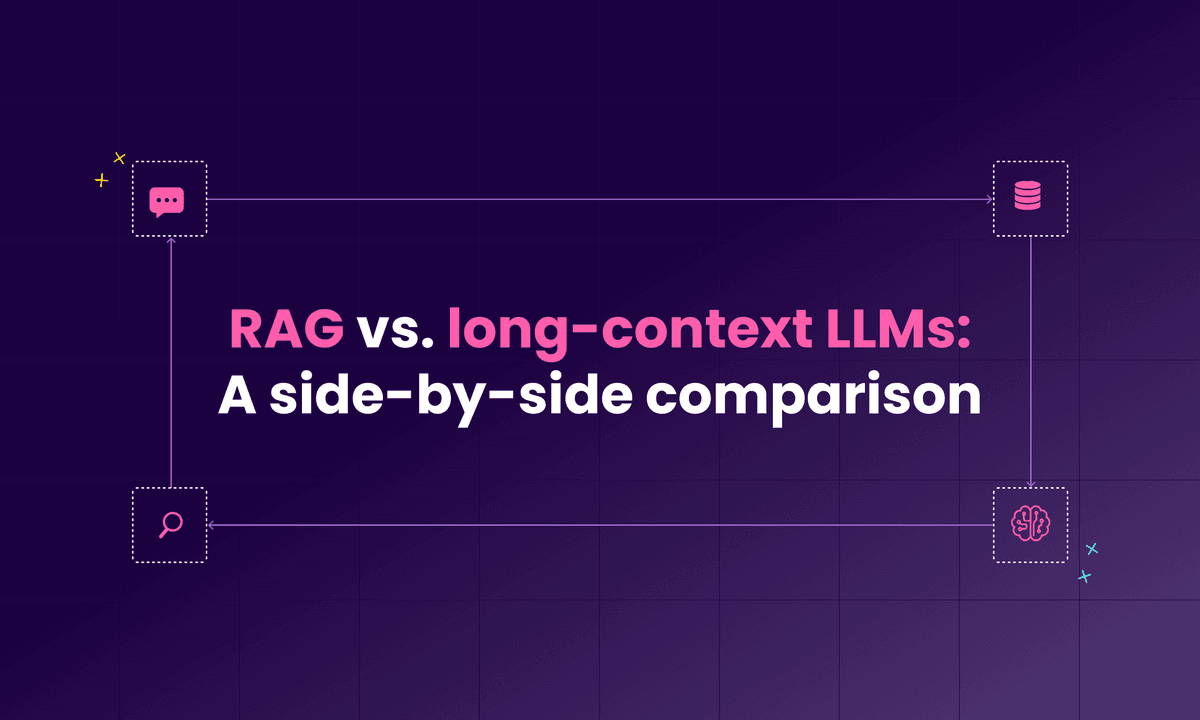RAG vs. CAG: The Smarter Choice for Your AI Stack
Discover the main differences between Retrieval-Augmented Generation (RAG) and Cache-Augmented Generation (CAG), and which one is best for you.
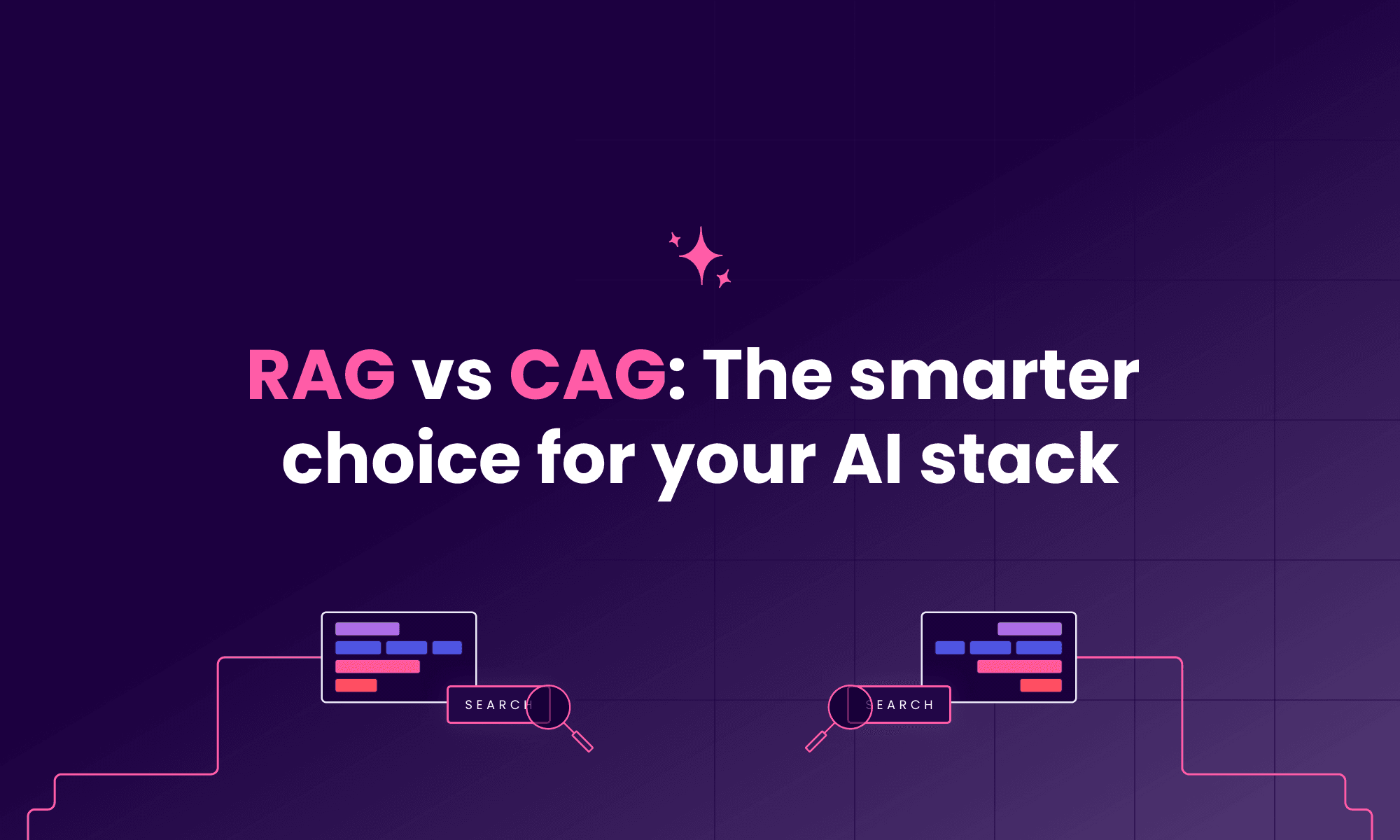
In this article
When building AI systems, one of the most significant decisions to make is how your model accesses and uses knowledge. Do you need real-time data every time, or can you rely on pre-stored, cached information?
This is where the difference between retrieval-augmented generation (RAG) and cache-augmented generation (CAG) lies:
- RAG retrieves live and updated data, making it ideal for situations where changes occur quickly and accuracy is crucial.
- CAG relies on cached information, delivering answers faster and more cheaply. It works well for repeated or predictable questions.
- RAG provides fresh, reliable responses and can handle various queries. However, it can be slow, expensive, and requires a solid infrastructure to run smoothly.
- CAG is quick, efficient, and easy to scale, but it can get outdated. It is also limited to what is already stored and requires regular updates to stay useful.
Choosing between the two comes down to considering your users:
- Are the questions predictable or wide-ranging?
- How up-to-date does the information need to be?
- What is your budget and infrastructure like?
You do not always have to pick just one. Hybrid approaches can combine both RAG and CAG. They allow the speed of cached answers while still retrieving live data when needed.
By the end of this article, you will understand how RAG and CAG work and which one better suits your projects.
What is RAG (Retrieval-Augmented Generation)?
RAG is a technique that enhances the capabilities of generative AI by using external knowledge to provide more accurate responses to user queries.
Rather than solely relying on the datasets the AI model was trained on, RAG searches a vector database or docs, retrieves the most relevant information, and then uses it to generate a response. This makes the answers more accurate and up-to-date.
What is CAG (Cache-Augmented Generation)?
CAG builds responses around the specific context window you provide.
Unlike RAG, which searches external databases for information, CAG uses past interactions to shape its answers. This makes its output feel more relevant and personalized.
In short, CAG makes AI less generic and more tuned to your needs by getting the proper context before generating a response.
How does RAG work in AI models?
RAG combines two steps: retrieving information and generating a response.
When you ask a question, the model first searches through an external knowledge base to find the most relevant documents. This retrieved information acts like notes or references that the large language model (LLM) keeps on hand for response generation.
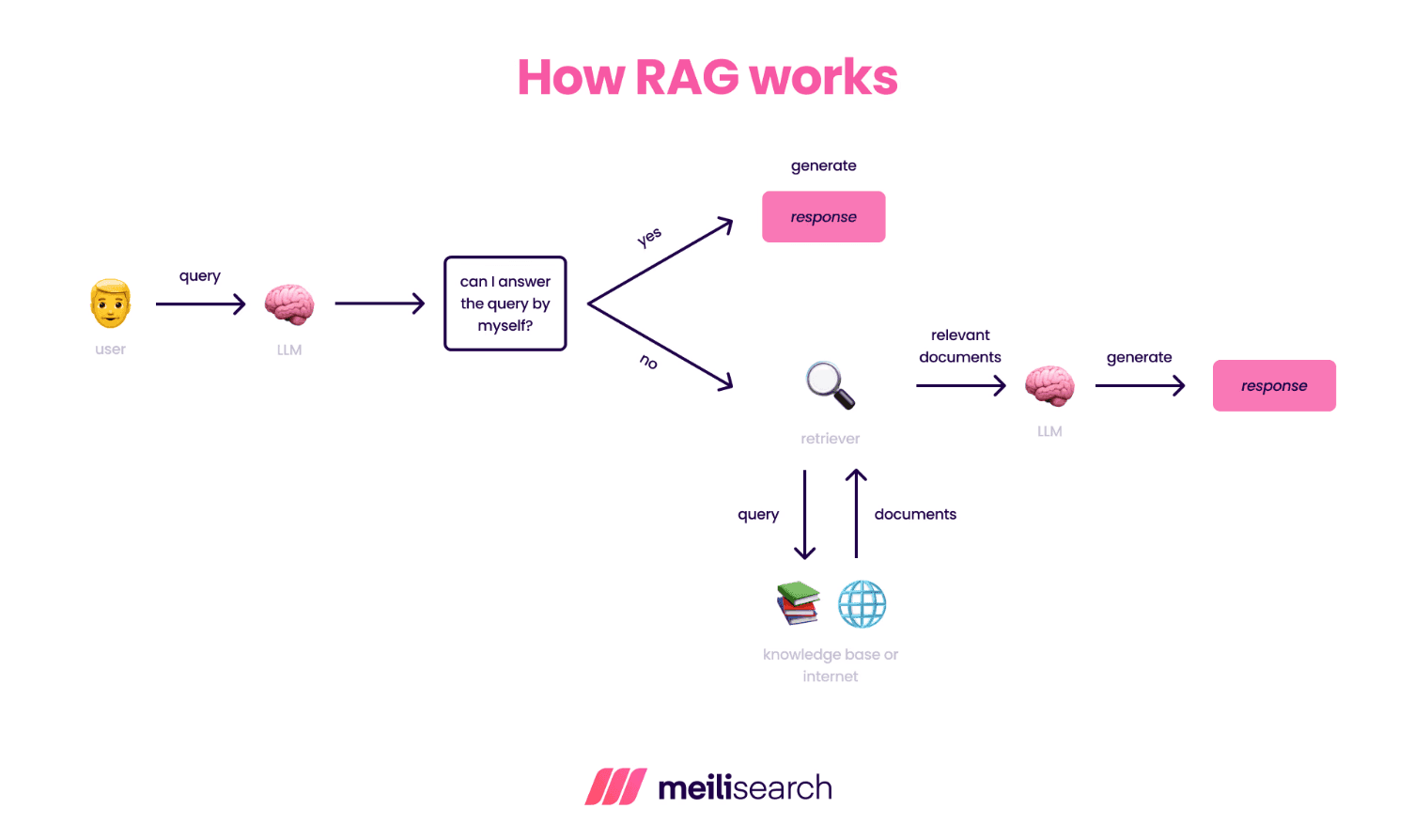
When generating its response, the LLM uses both internal knowledge obtained during training and the newly retrieved relevant context to return a response. It makes the response sound natural and grounded in real data.
RAG co/mbines the best of both search engines and language models, ensuring the AI system is less prone to hallucinations.
Now, let’s take a closer look at CAG and how it works.
How does CAG function in AI systems?
CAG works by providing AI with the necessary background information to generate an accurate response. When you interact with a CAG-enabled system, it does not rely on general knowledge alone.
Instead, it takes note of the context you provide, such as your past conversations or personal preferences. This information is cached temporarily using a key-value (KV) cache and can be referenced while generating the responses.
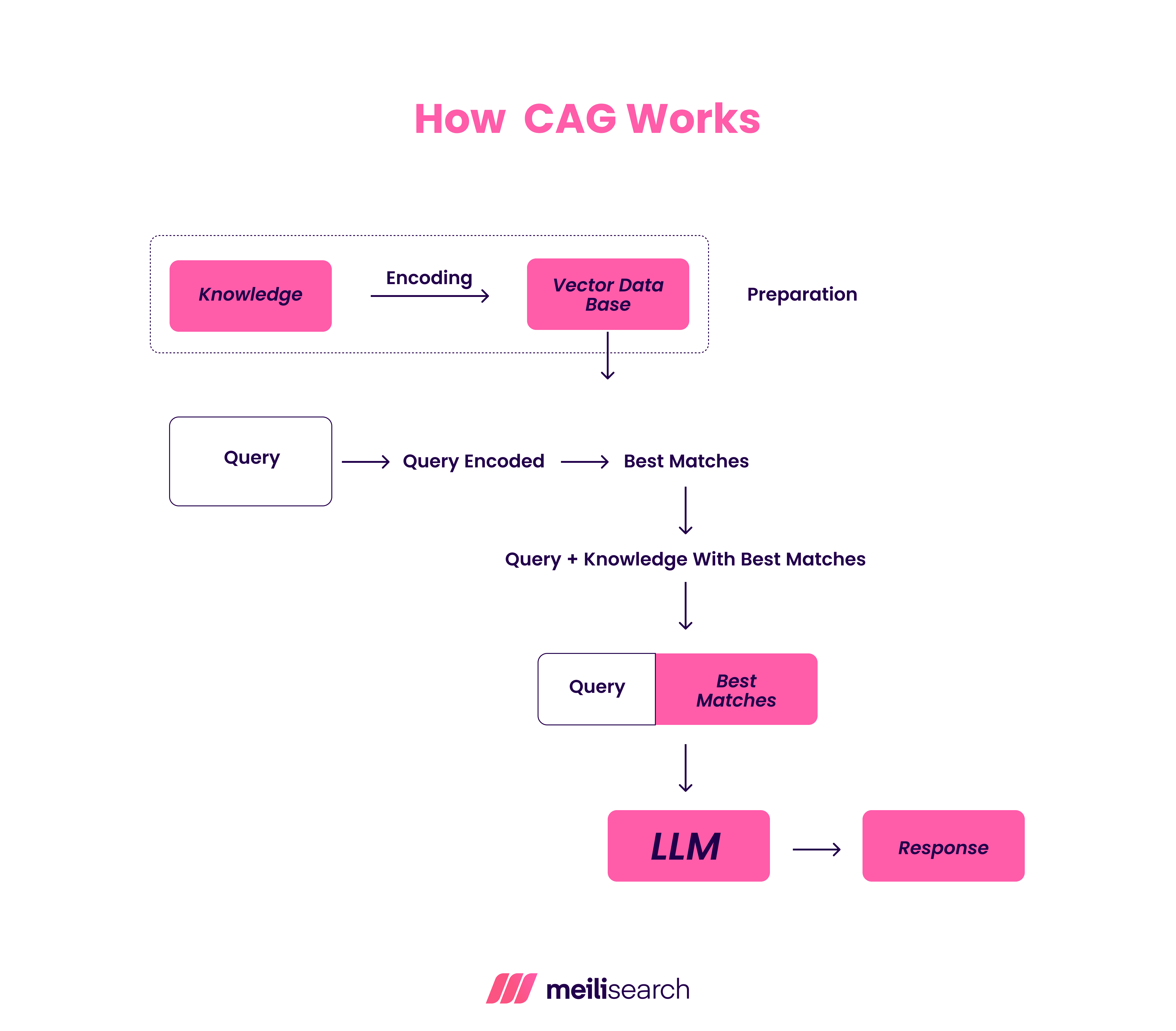
During the generation process, the LLM combines this cached context with its pre-trained knowledge to produce personalized and relevant answers.
Fundamentally, this limits the possibility of generating generic responses. CAG also continuously updates its context and determines the most relevant piece, ensuring the conversation stays aligned with your needs.
What is the main difference between RAG and CAG?
The main difference between these two systems is how they handle information when generating responses.
RAG obtains external resources for knowledge augmentation, whereas CAG relies on previously stored data.
Below is a quick preview of their key differences:
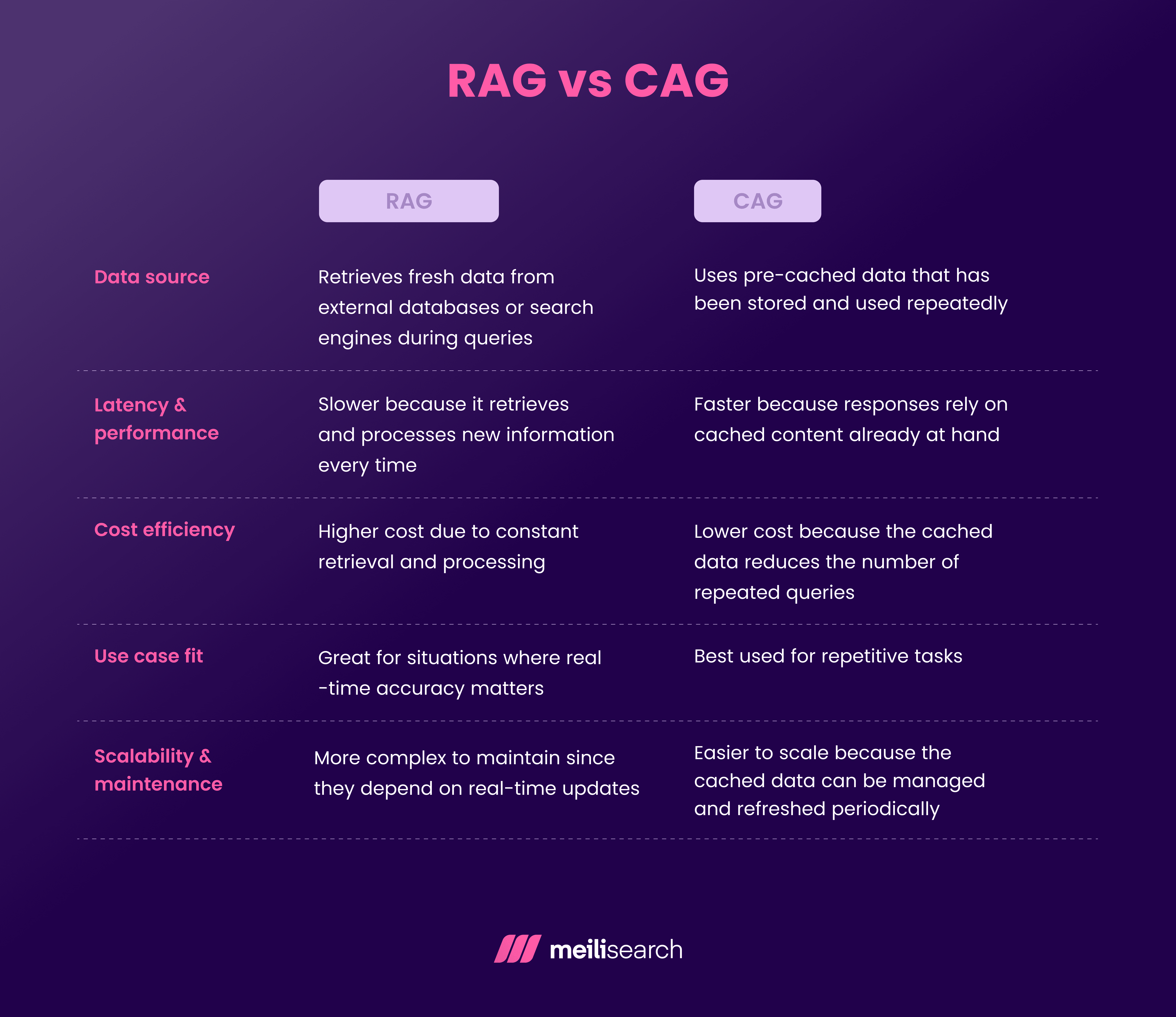
- Data source: RAG retrieves fresh information from external databases or search engines whenever a query is made. CAG works with pre-cached data that is already stored and ready for reuse.
- Latency & performance: RAG tends to have higher latency, as it requires a retrieval step every time, whereas CAG achieves low latency through preloading and reuse.
- Cost efficiency: With RAG, costs are typically higher due to the constant need to retrieve and process data. CAG, on the other hand, is more cost-effective since it eliminates repeated queries by reusing stored data.
- Use case fit: RAG is best suited for scenarios where real-time accuracy is essential. CAG is more useful for repetitive tasks where the same knowledge is applied often.
- Scalability & maintenance: RAG can be harder to maintain because it relies heavily on live updates and connections to external sources. CAG is easier to scale since cached data can be refreshed periodically and managed with less effort.
Now, let’s look at the pros and cons of both RAG and CAG.
What are the pros and cons of RAG?
RAG is beneficial for situations where accuracy is crucial, but it also has some limitations. Here are some upsides and downsides of RAG:
Advantages
- Provides fresh information through real-time retrieval: It can pull in the most up-to-date information, which is particularly beneficial when details change a lot.
- Has a broad knowledge base: Because it connects to external sources, it has access to a broader pool of knowledge than an AI model on its own.
- Reliable for fact-checking: It is beneficial for fact-checking or knowledge tasks where precision is key.
Disadvantages
- Slower performance: Since RAG must fetch new data, it has a higher inference time and responds more slowly.
- Higher costs: The constant retrieval of information makes it more expensive to operate.
- Maintenance challenges: RAG relies on external systems, so the results can be inaccurate if a source goes down or changes its data.
- Complex setup: Setting RAG up and keeping it running smoothly can be technically demanding.
What are the pros and cons of CAG?
CAG may be faster and cheaper, but it does not come without downsides. Here are some advantages and disadvantages of CAG:
Advantages
- Faster responses: Since the data is pre-cached, there is no need to fetch information repeatedly, resulting in faster reactions.
- Cost-effective: CAG is more cost-effective and efficient because cached material reduces the need for repeated processing.
- Efficient for repeat tasks: CAG is ideal for repetitive queries, where the same information is frequently required.
- Easier to scale: It is easier to scale and maintain, as updating the cache can be done periodically with minimal hassle.
Disadvantages
- Needs refresh cycles: To remain useful, the caches used in CAG require periodic reprocessing and refreshment.
- Risk of outdated information: Cached data can go stale, meaning it might miss recent changes or updates.
- Limited extended context: The CAG is limited in terms of what is already stored, which means the scope of answers is narrower.
- Potential bias: If the cached content is biased or incomplete, the responses will reflect those flaws.
Wondering when it is best to use RAG over CAG? Let’s discuss the best-fit scenarios for both.
When should you use RAG instead of CAG?
RAG is the better choice when your retriever must fetch new information from an external source for every user’s query.
For instance, in financial market updates, things move fast. Caching may not be helpful, as you do not want your AI system to return stale information. In such a case, RAG is an excellent approach.
It can also be used in fact-checking scenarios or high-stakes research projects where credibility depends on having the most current and comprehensive information available.
Another good use case of RAG over CAG is in scenarios where you do not expect repeated questions from users. It could also be used when you cannot precisely predict what users will ask.
In these cases, caching will not be particularly helpful because the LLM must retrieve new information from the knowledge sources each time.
In short, use RAG when your goal is to get current and accurate results, even if it takes a little longer or costs more.
When is CAG preferable to RAG?
Use CAG when optimization for speed and low latency is key. By reusing embeddings and cached context, CAG reduces costs and improves response times for predictable scenarios.
This is particularly useful in situations such as customer support chatbots, where people frequently ask the same questions repeatedly. Answers to questions such as ‘How do I change my password?’ or ‘What is the refund policy?’ rarely change, so caching saves time and cost without sacrificing accuracy.
CAG also works well for internal knowledge bases where employees frequently need the same set of guidelines or instructions.
Another great fit for CAG is large-scale deployments where keeping retrieval costs low is essential for scalability.
While CAG may not always reflect the latest updates, its strengths lie in consistency and speed. So, if the information you are dealing with does not change often, then CAG is a practical choice.
How do you choose between RAG and CAG for your project?
Choosing between RAG and CAG really depends on what your project needs most in terms of freshness, speed, or efficiency.
Here are some key criteria to consider:
- Nature of queries: If your system faces unpredictable queries, RAG is stronger since it can reach out for fresh information. If the questions are repetitive (for example, common FAQs) then CAG will serve you better.
- Budget considerations: RAG is more costly because every query must undergo the retrieval phase. On the other hand, CAG is cheaper because the cached data is reused.
- Performance requirements: RAG can be slower, but it gives you depth and updated context. CAG is faster because it does not need to fetch new data each time it is executed.
- Freshness of information required: When working on tasks that require real-time information updates, such as financial data, it is recommended to use RAG. For stable knowledge, cached responses are more than enough.
- Growth potential: Scaling RAG can become complicated due to constant retrievals. Scaling CAG is easier, since updating caches is simpler to manage.
- Handling varying outputs: CAG keeps things quick and efficient when you do not need much flexibility, but when accuracy is non-negotiable, using RAG is the better option.
- Technical setup: RAG needs a stronger infrastructure to maintain live connections. CAG is easier to deploy due to fewer moving parts.
Can RAG and CAG be combined?
Yes, you can combine RAG and CAG. In fact, combining RAG and CAG often gives you the best of both worlds. These are called hybrid approaches.
In such RAG pipelines, KV cache data is served first, and if it is missing or inadequate, the system triggers the retrieval step.
RAG and CAG can be combined in different ways, depending on your project’s goals. For example, you can build a:
- Fallback hybrid: The system defaults to cached responses for speed, but if the cache does not have a good answer, it switches to RAG for live retrieval.
- Selective hybrid: Certain types of queries are always routed to RAG (e.g., time-sensitive information) while routine or repetitive queries go straight to CAG.
- Blended hybrid: Both RAG and CAG are used together. Cached data provides a quick first draft, and RAG fills the gaps with fresh context if needed.
- Tiered hybrid: Responses start with cache for instant speed, then RAG silently updates or corrects the answer in the background so the answer to the query is fresher.
The benefits of a hybrid system are clear: faster responses, reduced costs, and still having the option to retrieve real-time data when needed.
However, combining both also brings challenges. You need to decide on the best way to determine when to use the cache and when to fetch new information. Managing two approaches together can also add complexity to the system’s infrastructure and maintenance.
RAG vs CAG: Choosing the right path for smarter, faster AI
When it comes to building more intelligent AI systems, RAG gives you freshness and accuracy by retrieving live data, while CAG provides you with speed and efficiency with its cached responses.
The real power lies in knowing when to use each one or even combine them in a hybrid system.
By balancing your API design, workflows, and knowledge integration needs, you can create LLMs that deliver optimized, real-world performance.
How Meilisearch makes RAG faster, lighter, and more practical
RAG can feel heavy because it constantly seeks new data, but Meilisearch enhances the retrieval pipeline's speed and ranking. Meilisearch also ensures quick responses without compromising accuracy. You get the freshness of RAG, but with the speed and lightness of a search engine built for performance.

